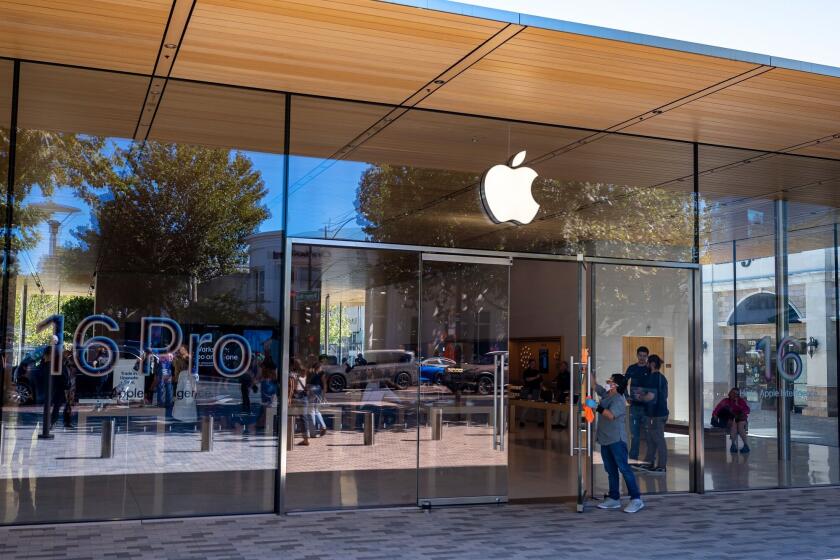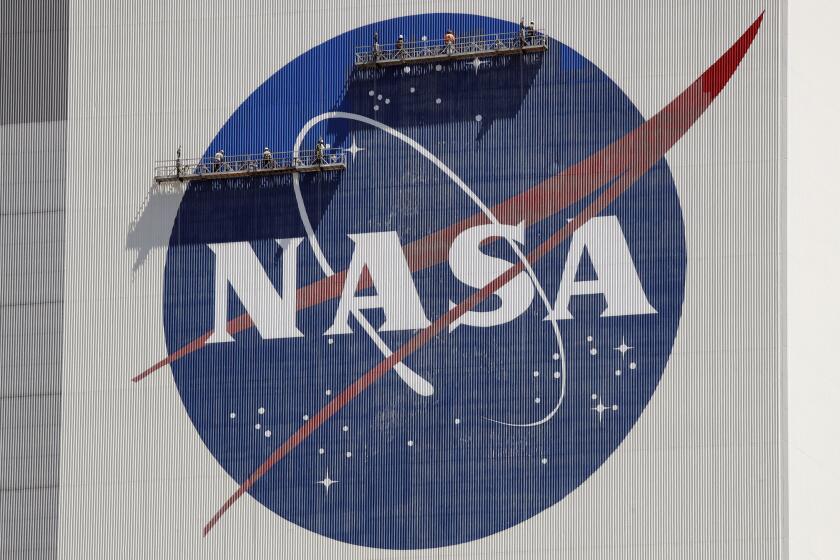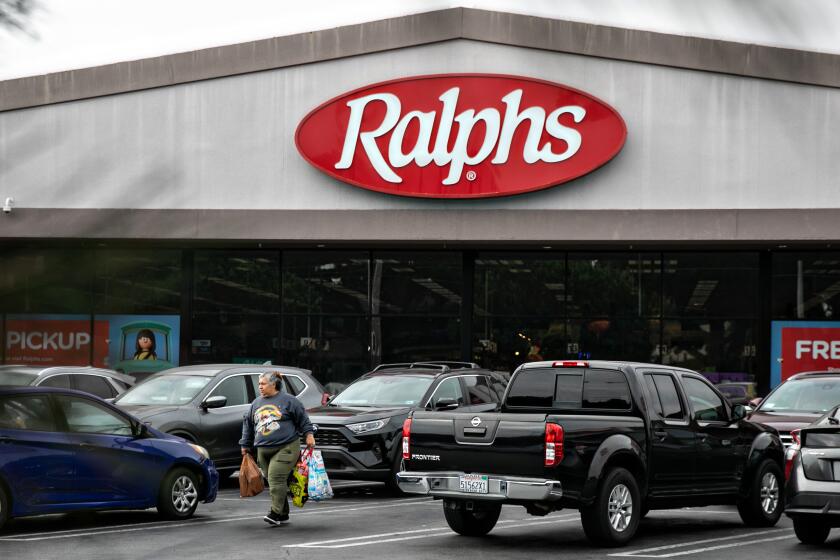A wild ride on cycles of boom and bust
- Share via
MORENO VALLEY — It’s an axiom of growth, Southern California-style: Suburbs that arise on the far edges of the metropolis in a boom, more often than not, will recede in a bust. After the down times end, as they always seem to do, the bulldozers and house framers return. And the next cycle begins.
The good people of Moreno Valley know this pattern all too well. Since sprouting out of the desert lands beyond Riverside in the mid-1980s, the city has lurched from outsized boom to neighborhood-gutting recession and back to boom, only to find itself battered yet again by the calamity known as the mortgage crisis.
Bob Chiordi has bobbed through every sea change. A 54-year-old father of two, Chiordi moved here in the ‘80s, part of a modern-day land rush that for a time would make Moreno Valley the nation’s fastest-growing city.
It was a classic suburban trade-off: Chiordi was willing to endure a death-march commute into Long Beach, where he worked as a structural mechanic for McDonnell Douglas, in exchange for an opportunity to own his own house. The American Dream, it’s often called -- when it all works out.
Chiordi now toils in the auto service department at Wal-Mart for $10.25 an hour, while scouring the Southland for a job more in line with his background. Moreover, for the second time since moving here, he is about to walk away from his home to foreclosure -- unable to keep up with the payments.
“I don’t really like the fact that I lost two houses in my life,” he said last week, sitting in the conference room of the Palm Canyon Community Church, where he volunteers as a youth counselor. “But you have to keep going forward.”
He told his story in a detached monotone, and at times it seemed he could barely believe what was happening to him. Again.
Chiordi first heard about Moreno Valley from a friend in the mid-’80s. Priced out of the red-hot Los Angeles and Orange County housing markets, he joined the caravans of first-time home buyers rushing east into the so-called Inland Empire.
“This was like the cheap place to move to,” Chiordi recalled. “We were able to buy a real nice house for under $100,000. And, if you wanted a really, really nice house, you could get one for $150,000.”
In a decade, the population of what would become Moreno Valley -- it incorporated in 1985 -- grew from 30,219 to 118,779, according to the 1990 U.S. Census. Yes, there was a strangeness to this new city on the metropolitan fringe.
“A larval city,” a Times columnist called it, after a visit in 1989. “ . . . no formal city hall, no courthouses have been built here, no covered malls. . . . Like a warm sea, the subdivisions seem to be waiting for the bones of their community to be built.”
But there were churches, tiny churches, tucked into strip malls and abandoned taco stands and tract homes. The precursor to Palm Canyon church, where Chiordi worships, was located in a strip mall just north of Highway 60. The storefront currently houses a discount auto insurance office, with a sign beckoning the auto world’s disenfranchised: “Multi-tickets/DUI’s/Accidents/Young Drivers/Suspended License. No problem.”
The church pastor, Tom De Vries, described back then the strains that long commutes and “frontier nothingness” were placing on Moreno Valley residents. There were problems with latchkey children, with spouses who rarely saw one another during the week.
Chiordi himself did not last long as a rush hour commuter. After two months he switched to swing and night shifts, which allowed him to make the 65-mile drive at less crowded times: “The last day I worked the first shift, a plane landed on the 91 Freeway,” he said. “It took me 4 1/2 hours to get home. I said, ‘That’s it.’ ”
By the early ‘90s, he and his family had settled in. He started a cleaning business on the side, and it grew to the point where he could quit McDonnell Douglas and the commute for good. And then, with recession and base closures, California fell into hard times. Moreno Valley, and Bob Chiordi, fell harder.
Real estate values plunged, and houses by the thousands were repossessed, boarded up, abandoned. Gangs grabbed a foothold. March Air Force Base -- aside from housing construction, the city’s lone economic stalwart -- was downsized. Moreno Valley’s fledgling city government was overwhelmed.
“We had a city council at the time,” recalled council member Bonnie Flickinger, “which had very little experience or history on which to base some decisions. And mistakes were made.”
The biggest was to bank on the notion that the boom would never end. Fees charged to developers were used to underwrite the city’s operating expenses. When construction stalled, so did the city.
Chiordi soon discovered he owed far more on his house than what it was worth, and so, he said, “I just walked away.” He moved his family and his steam-cleaning business into a rental, and began the long climb back up. It was at this point he discovered the Palm Canyon church.
As it happened, the first Sunday that Chiordi attended Palm Canyon was the final one for the founding pastor. Before he moved on to a new assignment, Tom De Vries handed out racing batons and read a passage from First Corinthians: “Know ye not that they which run in a race run all, but one receiveth the prize? So run, that ye may obtain.”
Moreno Valley and Chiordi both stayed in the race. And quietly, the cycle turned. A new medical center opened. An indoor shopping mall was built. Department stores and chain restaurants began to pop up. City Hall opened, and council members no longer had to hold office hours in a strip mall food court.
The bedroom community of the 1980s was beginning to feel more like a real city: “The first time I really realized it,” recalled Sally Baden, a Palm Canyon member, “was when the Burger King was going in. I said, ‘Wow, we are getting big!’ ”
In time Moreno Valley would add 50,000 more residents and many, many jobs. The city dedicated new parks and other amenities, financed in part through a utility tax passed amid the panic of the first bust. By 2002 the Riverside Press-Enterprise was editorializing about the “Moreno Valley Comeback.”
Chiordi rode this tide up. He sold his business, went to work as a branch manager at an auto dealership, bought a new house and, as real estate values soared, refinanced it twice, taking out money to pay down old debts and for a family vacation. He had purchased the house for $160,000. It was now worth $420,000, at least on paper.
“I had the feeling that it was a good economic time again,” he said, “and that it was going to last for a while.”
It didn’t.
The mortgage crisis has swept through all California, of course, but the effect seems worse, again, out here on the edge. In the second quarter of 2008 alone, 1,182 foreclosures were reported in Moreno Valley, according to DataQuick Information Services, a clearinghouse of real estate data.
By comparison, in the same period, Pasadena and Monrovia, with a combined population equal to that of this city, reported 101 foreclosures. Long Beach, with a population of about half a million, reported 263. Compton, roughly 100,000 in population, 239.
The numbers don’t do justice to what can be seen at street level. Rare is the block in Moreno Valley that does not have at least one vacant house. Many have four or five. They are easy to spot. The lawns have turned brown and blinds have been removed, revealing a forlorn emptiness within.
Chiordi held on as long as he could. A year ago, he left his job at the auto dealership and started another new business, setting up Internet sites for auto dealers. He felt that was what the Lord wanted him to do. The idea might have been sound. The timing was not.
“Just because you believe God is leading you in that direction,” he said, “doesn’t mean it is going to be easy. And that was my downfall, thinking that it was going to be easy.”
Chiordi managed to drum up only a few clients. By December he found himself unable to make his mortgage payments. He tried to paddle his way through, sending out more than 100 resumes, citing his experience in the aircraft industry, auto sales, computers, church youth groups.
“It’s frustrating,” he said. “It doesn’t seem like anybody is interested in hiring a 54-year-old who doesn’t have a college degree, despite my experience.”
So far the best he has been able to do is Wal-Mart.
“I sell oil changes for a living now,” Chiordi said flatly.
In June, with the bank moving to seize his home, Chiordi filed for bankruptcy. Maybe he had overreached -- putting his faith in the boom, pushing hard for a better life -- but his were not uncommon mistakes in this time and place.
Still, he said, “I hate the idea of not paying my bills. The first time, I didn’t have God in my life. This time I did, and that makes all the difference. The Scripture says if you have got bills, you have got to pay them. I feel like I sinned. But I will be forgiven. My faith in God is stronger than ever, and I’m letting him guide me.”
Despite the onslaught of foreclosures, many people around Moreno Valley believe this slump won’t be as severe as the first. Some development projects have stalled, but others go forward. When the tide rolls back in, most everybody agrees, the city will renew its march across the desert floor, advancing toward a population of 300,000. It’s just a matter of hanging on.
With financial help from his extended family, Chiordi will be moving this month with his wife, two grown children and two grandchildren into a house they’ve bought on a hill in the eastern corner of town. It’s a tidy beige structure, built only four years ago, with a terra cotta roof and a backyard view of Moreno Valley spread out below. It had fallen into foreclosure last April, and the price was right.
--
More to Read
Inside the business of entertainment
The Wide Shot brings you news, analysis and insights on everything from streaming wars to production — and what it all means for the future.
You may occasionally receive promotional content from the Los Angeles Times.











